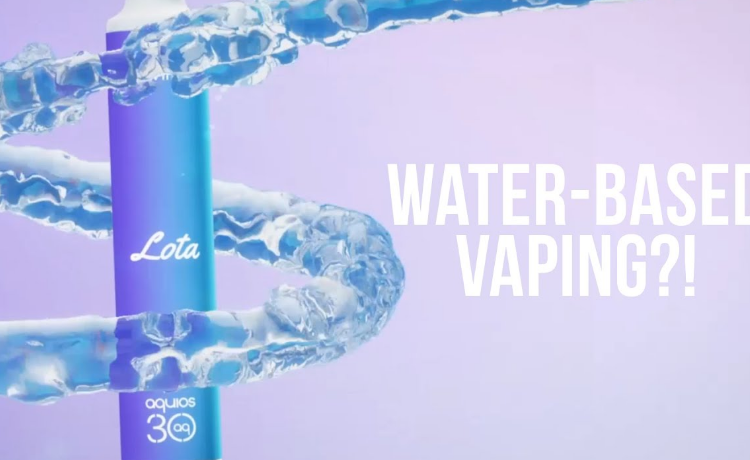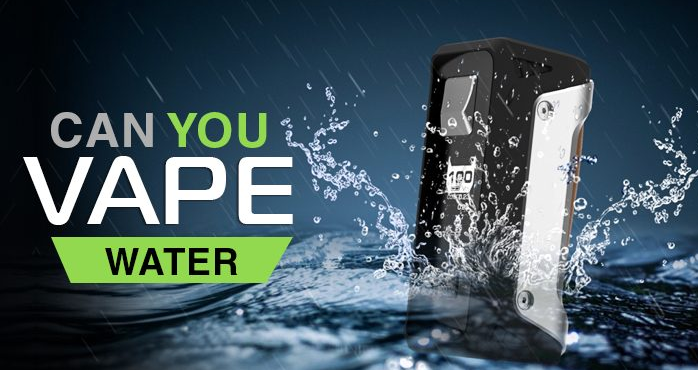Technically, you can vape water, but it lacks efficacy and can damage devices designed for viscous e-liquids.
Understanding Vaping
Vaping represents a method of inhaling a vapor produced by an electronic cigarette (e-cigarette) or other vaping device. These devices heat a liquid to generate an aerosol, commonly called a “vapor,” that the user inhales. Vaping liquids typically contain nicotine, flavorings, and other chemicals.
How Vaping Works
Vaping devices operate by heating a liquid to its boiling point, turning it into a vapor that can be inhaled. The core component responsible for this process is the heating element, often referred to as an atomizer or coil. When the device is activated, usually by a button press or by inhaling, the battery sends power to the atomizer, which rapidly heats up. This heat is transferred to the e-liquid in the cartridge or reservoir, turning it into vapor.
The efficiency of this process varies significantly across different devices. For instance, advanced personal vaporizers, also known as “mods,” can be adjusted to operate at power outputs ranging from 10 watts to over 200 watts. Higher power outputs can produce more vapor and stronger flavors but at the expense of increased battery consumption and e-liquid usage.
The quality of vapor also depends on the ratio of propylene glycol (PG) and vegetable glycerin (VG) in the e-liquid. PG provides more flavor but less vapor, while VG produces a noticeably thicker vapor but can mute flavors slightly. E-liquids with a 50/50 PG/VG ratio offer a balance between flavor intensity and vapor production.

Components of a Vape Device
Battery: The power source for the device. Battery capacity is critical as it determines how long you can vape before needing a recharge. Capacities range significantly, from small 300mAh batteries in “cig-a-like” models to over 5000mAh in larger box mods.
Atomizer: This heats the e-liquid to create vapor. Atomizer lifespans vary, typically lasting 1 to 4 weeks depending on usage before they require replacement. The cost of replacement coils can add up, averaging $2 to $5 each.
Tank/Cartridge: Holds the e-liquid. Tanks can vary in size, usually between 2ml to 5ml for standard devices, affecting how often users need to refill.
Mouthpiece/Drip Tip: The part from which the user inhales the vapor. The size and shape of the mouthpiece can affect the vaping experience, with wider tips allowing for more vapor and a more direct lung hit.
E-Liquid: The liquid that is vaporized. E-liquid costs vary, with a 60ml bottle typically priced around $15 to $25, depending on the brand and quality. The choice of e-liquid is crucial, as it impacts both flavor and the amount of vapor produced.
The design and material of the vape device also influence its performance and durability. Materials range from lightweight plastics to durable metals like stainless steel. The quality of these materials can affect the device’s resistance to wear and tear, with higher-quality materials generally ensuring a longer lifespan but at an increased cost.
Water Vaporization
Science of Vaporizing Water
Vaporizing water involves changing liquid water into vapor or steam through the application of heat. The key temperature for this transformation is 100°C (212°F) at standard atmospheric pressure, which is the boiling point of water. This process requires a significant amount of energy, approximately 2,260 joules per gram of water vaporized, known as the enthalpy of vaporization.
Differences Between Vaping Water and Other Substances
When comparing the vaporization of water to other substances commonly vaped, such as nicotine solutions or flavored e-liquids, several key differences emerge, notably in terms of boiling points, vaporization energies, and the physical effects produced.
Boiling Points and Vaporization Energies
Nicotine solutions and flavored e-liquids typically have lower boiling points than water. For instance, propylene glycol and vegetable glycerin, two primary ingredients in many e-liquids, have boiling points of 188.2°C (370.8°F) and 290°C (554°F), respectively. Despite the higher boiling point of vegetable glycerin compared to water, its presence in a solution lowers the overall boiling point of the mixture due to the azeotropic properties of e-liquid mixtures.
The energy required to vaporize e-liquids is different from that of water due to the varying chemical compositions and boiling points. E-liquids, being mixtures, absorb heat in a manner that depends on their specific components’ heat capacities and latent heats of vaporization. However, the exact amount of energy varies based on the e-liquid’s formulation.
Physical Effects
Vaping water produces a significantly less dense vapor compared to e-liquids due to the absence of solutes like nicotine, flavorings, propylene glycol, and vegetable glycerin, which contribute to the visible cloud density in vaporized e-liquids. Additionally, inhaling water vapor can lead to discomfort and is inefficient at delivering substances like nicotine or flavors into the bloodstream.
While e-liquids are designed to carry flavors and nicotine efficiently, vaping pure water does not provide the throat hit or flavor experience that users seek from vaping products. The lack of viscosity in water also means it does not wick well in standard vaping devices designed for thicker e-liquids, leading to potential device malfunction or inadequate vapor production.

Health Implications
Effects of Vaping Water on the Respiratory System
Vaping water might seem harmless at first glance, but it introduces unusual challenges to the respiratory system. When water vapor is inhaled directly into the lungs, it can lead to a condition known as “water vapor-induced lung irritation”. Unlike air or the specialized mixtures in traditional vape liquids designed to be inhaled, water vapor can disrupt the delicate balance of moisture in the lungs and potentially dilute the surfactant that helps keep the airways open.
Inhalation of pure water vapor can also lead to a rapid cooling of the respiratory tract, which is not only uncomfortable but can trigger bronchospasm, a sudden constriction of the air passages in the lungs associated with coughing and difficulty breathing, especially in individuals with underlying respiratory conditions like asthma.
Comparison with Vaping Nicotine or Flavorings
Nicotine and flavoring compounds in e-liquids interact with the respiratory system in ways markedly different from water vapor. Nicotine, a known stimulant, increases heart rate and blood pressure, and has a vasoconstrictive effect, which can exacerbate cardiovascular problems. The inhalation of nicotine and other chemicals in vape juice is also linked to changes in lung function and the development of respiratory conditions over time.
Flavorings, although initially considered harmless, have been found to contain substances like diacetyl, which is associated with a condition known as “popcorn lung” or bronchiolitis obliterans, a serious lung disease that damages the smallest airways in the lungs. The risk associated with inhaling flavoring chemicals highlights a significant difference in health implications when compared to the simple act of vaping water.
While vaping water avoids the introduction of nicotine and potentially harmful chemicals found in flavors, the lack of addictive substances and the reduced risk of chemical-induced lung injury does not eliminate the risks associated with inhaling hot water vapor directly into the lungs. The temperature and moisture levels of the vapor can still cause immediate discomfort and long-term respiratory effects, albeit through mechanisms different from those associated with vaping traditional e-liquids.

Technical Considerations
Modifications Needed for Vaping Water
To effectively vape water, standard vaping devices require significant modifications. These changes are necessary because traditional vaping mechanisms are tailored to heat viscous e-liquids, not to vaporize water efficiently.
Heating Element Adjustments: The wattage and design of the heating element may need alteration. Water has a high specific heat capacity, requiring approximately 4.18 Joules to raise the temperature of one gram of water by 1°C. To vaporize water efficiently, a device might need a more powerful heating element capable of reaching 100°C (212°F) rapidly, the boiling point of water at standard atmospheric pressure.
Wicking Material Replacement: Traditional wicking materials used in vapes, like cotton, are optimized for thick, viscous liquids. Vaping water may necessitate materials that do not rely on capillary action to the same extent, reducing the risk of dry hits or inadequate vapor production.
Tank and Seal Enhancements: Given the lower viscosity of water, ensuring that the tank and its seals are leak-proof becomes even more critical. Modifications might include tighter seals and materials that are less prone to degradation when in constant contact with water.
Challenges and Limitations
Device Efficiency and Durability: Adapting a vape device to efficiently vaporize water increases the strain on its components. The required higher power output for heating can lead to reduced battery life and increased wear on the device’s heating elements.
Vapor Production Issues: Even with modifications, producing a satisfying amount of vapor from water alone is challenging. The lack of substances like propylene glycol and vegetable glycerin, which contribute to the visible cloud in traditional vaping, means that water vapor may appear less dense and satisfying to users.
Health and Safety Concerns: Modifying devices to vape water raises questions about the potential for overheating and the risks associated with inhaling extremely hot vapor. There is also the issue of water quality and the safety of inhaling various impurities that may be present in tap or distilled water.
Economic Viability: From a manufacturing perspective, creating a device specifically for vaping water may not be economically viable. The cost of research, development, and marketing for a niche product with uncertain demand could outweigh potential profits.